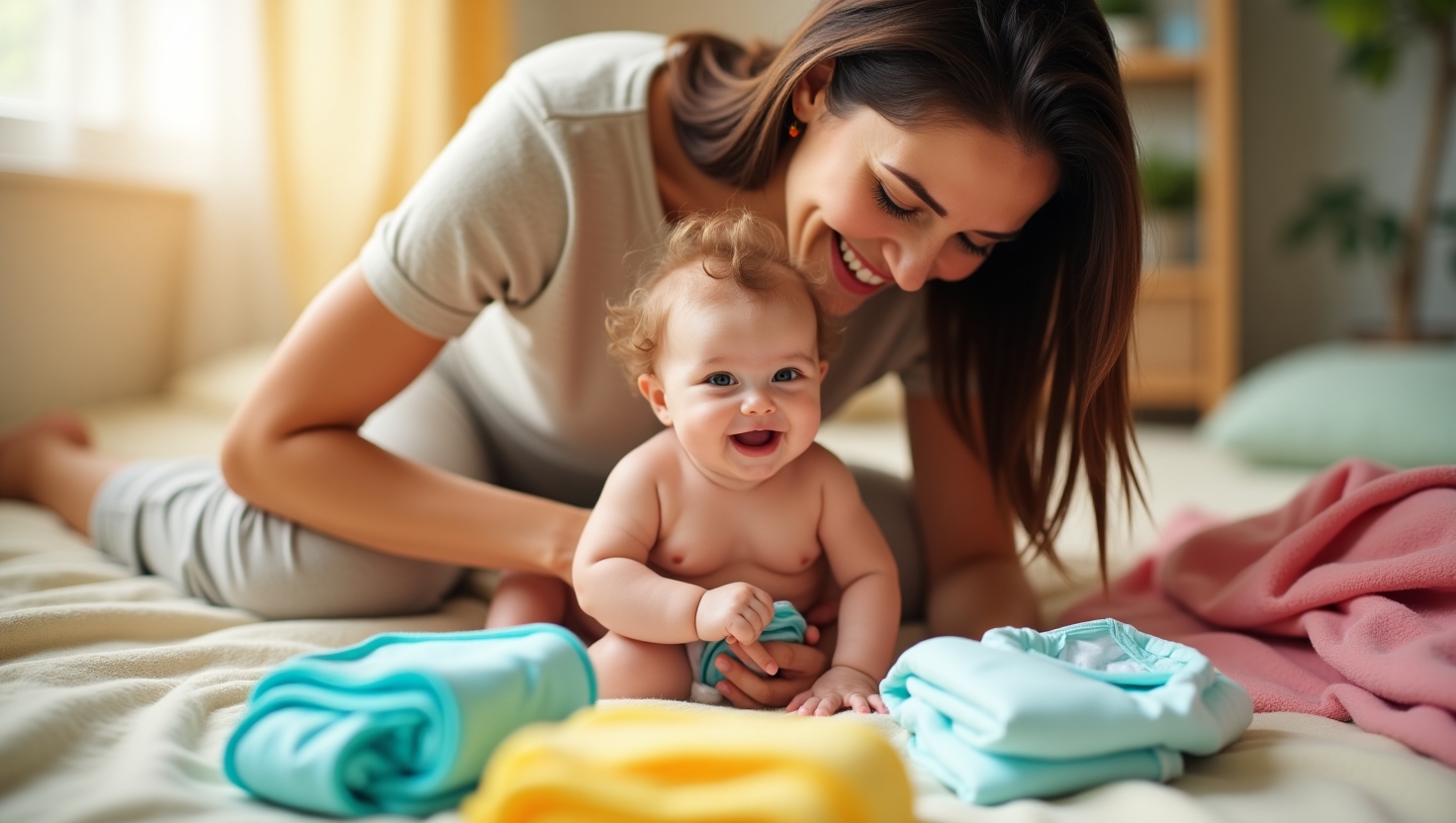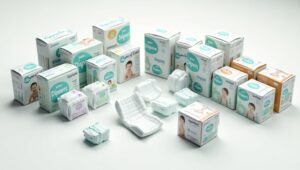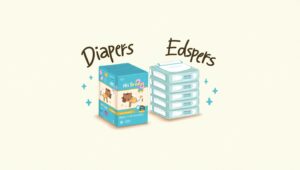What Are Nappies? And How Are They Different From Diapers?
Nappies and diapers are terms that often spark confusion, especially among new parents or people moving between countries like the UK and the US. While they essentially serve the same function — managing infant and toddler waste — the two words reflect subtle regional differences and cultural nuances. But is that all? Or are there actual product distinctions between nappies and diapers?
This comprehensive guide explores what nappies are, how they differ from diapers, their evolution over time, types, materials, usage tips, and the debate between disposable vs reusable nappies. Whether you’re a parent, caregiver, or just curious, this article will clarify everything you need to know.
What Are Nappies?
Nappies are absorbent garments worn by babies and young children who are not yet toilet trained. They are designed to contain urine and feces, keeping the child dry and preventing leaks and skin irritation. Nappies are secured around the waist and between the legs, typically with adhesive tabs or fasteners.
The term “nappy” is commonly used in British English, including in countries such as the UK, Australia, New Zealand, and South Africa. It is a short form of the word “napkin,” which in the 19th century referred to a cloth used to catch waste.
In day-to-day usage, nappies refer to either disposable nappies or reusable cloth nappies, depending on a parent’s choice, environmental concerns, and economic factors.
What Are Diapers?
Diapers serve the same function as nappies — they are absorbent undergarments designed to manage a baby’s waste before they are potty trained. The key difference is that “diaper” is the term used in American English, including in the United States and Canada.
The word “diaper” dates back to the 14th century and originally described the cloth with a repeated geometric pattern. Over time, it evolved to refer to the absorbent undergarment used for babies.
In American households, “diaper” is a commonly recognized term, whether talking about disposable diapers or cloth diapers.
Are Nappies and Diapers the Same Thing?
Yes — and no.
Functionally, nappies and diapers are the same. They both:
- Absorb urine and feces
- Prevent leakage
- Keep babies dry and comfortable
- Protect against rashes and irritation
- Are available in disposable and reusable forms
However, the difference lies in terminology:
| Term | Used In | Example Brands |
|---|---|---|
| Nappy | UK, Australia, NZ, etc. | Pampers UK, Huggies AU |
| Diaper | USA, Canada | Pampers US, Luvs, Huggies |
Despite the interchangeable nature, packaging, product labeling, and even advertising may vary slightly depending on the region.
Types of Nappies/Diapers
There are several types of nappies/diapers available in the market today, catering to the needs of infants, toddlers, and even adults. Here’s a breakdown:
1. Disposable Nappies/Diapers
These are single-use items that are discarded after one use. Made of superabsorbent polymers, layers of plastic, and paper-like materials, disposable diapers offer convenience and hygiene.
Pros:
- Easy to use and dispose of
- Excellent absorbency
- Widely available
- Time-saving for busy parents
Cons:
- Expensive over time
- Non-biodegradable (most brands)
- Environmental concerns
2. Cloth Nappies/Diapers
Reusable and made from cotton or bamboo fabric, these nappies can be washed and used again. Modern versions come with waterproof covers and absorbent inserts.
Pros:
- Eco-friendly
- Cost-effective in the long run
- Gentle on baby’s skin
Cons:
- Require washing and drying
- Not as convenient for travel
- Initial setup cost is higher
3. Pull-Up Nappies
Designed like underwear, pull-ups help toddlers transition during potty training. They can be pulled up and down, promoting independence.
Pros:
- Ideal for training
- Easy for toddlers to manage
- Less bulky
Cons:
- Less absorbent than regular nappies
- May leak if used overnight
4. Swim Nappies
Used while swimming, these don’t absorb water like regular nappies but contain solid waste to keep pools clean.
Pros:
- Perfect for water activities
- Don’t swell up in water
Cons:
- Only hold solid waste
- Not suitable for daily wear
Key Components of Nappies/Diapers
Understanding what goes into a nappy/diaper helps parents make informed choices. Whether reusable or disposable, here are the essential parts:
- Absorbent Core: Usually made of fluff pulp and superabsorbent polymer (SAP) that locks in moisture.
- Top Sheet: The inner layer that touches the baby’s skin, often made from soft material to reduce irritation.
- Back Sheet: Waterproof outer layer to prevent leaks.
- Fasteners or Tabs: Allow easy fastening and adjustment.
- Leg Cuffs: Help prevent leaks around the thighs.
- Elastic Waistbands: Provide a snug but comfortable fit.
Materials Used in Nappies/Diapers
Materials vary depending on the type and brand, but common ones include:
- Cotton: Found in cloth nappies and some eco-friendly disposable options.
- Bamboo Fiber: Naturally antibacterial and biodegradable, used in sustainable brands.
- Polypropylene and Polyethylene: Used in disposable diaper layers for durability and moisture protection.
- SAP (Super Absorbent Polymer): Key material for absorbing and locking away liquids.
How Nappies/Diapers Have Evolved
The journey of the nappy/diaper has been a long and fascinating one:
- Pre-1800s: Babies wore simple cloths or animal skins.
- 1800s: The use of linen or flannel cloths held with safety pins became common.
- 1940s: Cloth diapers with rubber pants were used.
- 1961: Procter & Gamble introduced Pampers — the first widely used disposable diaper.
- 1980s–2000s: Introduction of SAP, better fits, leak guards, and training pants.
- Today: Eco-conscious brands, plant-based materials, and advanced leak protection have redefined nappies.
Nappies vs Diapers: Cultural and Regional Differences
Aside from the word choice, cultural preferences and habits also differ:
| Feature | Nappies (UK) | Diapers (US) |
|---|---|---|
| Common Brands | Tesco, Asda, Boots, Aldi | Pampers, Huggies, Luvs |
| Potty Training Age | Slightly earlier | Slightly later |
| Terminology | “Nappy rash”, “changing mat” | “Diaper rash”, “changing pad” |
| Legislation & Labels | EU guidelines for safety and labeling | US FDA regulations |
| Availability of Cloth | More common and popular | Gaining momentum, but still niche |
These subtle variations affect shopping choices, parenting discussions, and even online search behavior.
Nappy or Diaper Rash
No matter the term used, both can cause diaper/nappy rash, a skin irritation from prolonged contact with urine or feces.
Prevention Tips:
- Change nappies frequently.
- Let the baby’s skin air dry.
- Use a barrier cream.
- Choose breathable, hypoallergenic materials.
Environmental Impact
Disposable nappies/diapers are responsible for millions of tons of landfill waste annually. A baby may use around 4,000–6,000 disposable nappies before potty training.
Eco-Friendly Solutions:
- Opt for biodegradable or compostable brands.
- Use cloth nappies.
- Choose minimal-packaging options.
- Support brands that use plant-based or recycled materials.
FAQs About Nappies and Diapers
1. Is a nappy and a diaper the same thing?
Yes, they are the same in functionality. The difference lies in regional terminology.
2. Which is better: cloth or disposable?
Both have pros and cons. Disposable diapers offer convenience, while cloth nappies are eco-friendly and cost-effective in the long term.
3. Are nappies safe for newborns?
Yes. Choose soft, hypoallergenic materials and ensure regular changing to avoid rashes.
4. How many nappies does a baby use daily?
Newborns may need 8–12 nappy changes per day, which gradually reduces with age.
5. Can adults use nappies or diapers?
Yes, adult diapers are available for individuals with incontinence or mobility challenges.
Choosing the Right Nappy/Diaper for Your Baby
Here are a few things to consider when choosing the best product for your child:
- Baby’s Age and Weight: Always check the size chart on the packaging.
- Absorbency: Especially for overnight use.
- Skin Sensitivity: Look for fragrance-free, hypoallergenic options.
- Budget: Cloth nappies may save money over time.
- Lifestyle: Busy families may prefer disposables; eco-conscious ones may lean towards reusable types.
Conclusion
In essence, nappies and diapers are two names for the same essential baby product. Whether you’re in London or New York, whether you prefer cloth or disposable, the goal is the same — to keep your baby dry, comfortable, and happy.
The real difference lies not in the product itself, but in language, culture, and personal choice. Understanding the terminology and the available options can help you make informed decisions as a parent or caregiver.
So the next time someone talks about nappies or diapers, you’ll know exactly what they mean — and much more.








